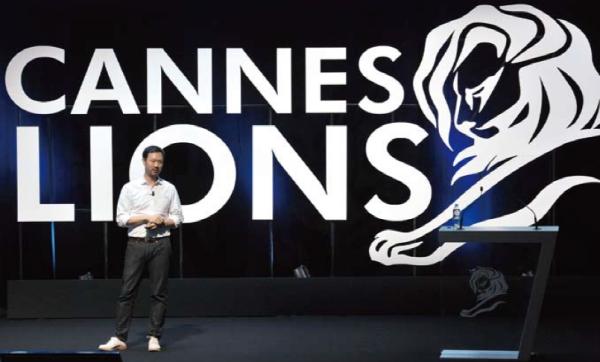2015 칸 국제광고제에서 피터 김 디지털 부문장이 세미나 연사로 무대에 섰다.
소셜미디어 트렌드를 주제로 한 세미나 내용을 요약해 싣는다.
2015년, 기업들은 소셜미디어를 자신들의 비즈니스에 효과적으로 활용하는 최적의 방법을 찾아낸 것으로 보인다. 물론 이는 지난 10년간 점차 진화하는 소셜미디어 환경에 맞춰 비즈니스 모델을 최적화시키기 위한 부단한 노력과 시행착오의 결과일 것이다.
그러나 소셜미디어 트렌드는 지금 이 순간도 끊임없이 변화하고 있으며, 적응에 실패한 기업들이 기울인 노력은 고스란히 낭비될 것이다. 이제 마케터들은 미래 소셜미디어가 보일 특징을 염두에 두고 비즈니스 전략을 업데이트해야 한다. 다가올 10년, 소셜미디어 트렌드는 다음과 같이 변할 것이다.
1. Evolving
소비자들이 웹사이트를 이용하고 브랜드가 소비자와 교감하는 방식은 지난 10년간 완전히 바뀌었다. 기업들은 2005년에 유효하던 전술들을 중단하고, 장기 성장을 위해 데이터를 활용할 수 있는 고객 관계 및 체험 전략을 채택해야 한다.
2. Shoppable
소셜미디어는 그간 기업 CFO의 수익 검토 대상에서 제외됐었다.
그러나 이제 기업들이 소셜미디어를 통해 돈을 벌어들일 차례다. 버버리와 랄프로렌 같은 패션 브랜드들은 이러한 사실을 일찌감치 깨닫고 런웨이 비디오를 보면서 동시에 제품 구매를 가능케(Shoppable) 했다. 이제 모든 브랜드가 소비자의 구매를 유도하는 콜투액션(Financial Call to Action)a을 소셜미디어 콘텐츠에 포함해야 한다.
3. Snackable
소비자들은 점차 긴 시간이 소비되는 콘텐츠를 기피하고 있다. 사용자들은 정보를 살펴볼 때 최대한 빨리 메시지의 핵심을 이해하기를 원한다. 브랜드가 콘텐츠를 간결하게 만들수록(Snackable), 그 콘텐츠의 사회적 파급력이 더 커지게 된다.
이해가 쉽다는 것은 공유가 쉽다는 것을 의미하며, 이는 결국 성공적인 콘텐츠 및 캠페인 결과로 이어진다.
4. Automated
현재 소셜미디어의 광고 배치 및 퍼블리싱은 품이 많이 가는 작업으로 이뤄진다. 하지만 곧 데이터와 컴퓨터를 더욱 적극적으로 활용하는 방식으로 진화할 것이다. 대부분의 광고주는 이미 배너와 동영상 광고 예산을 자동화 방식으로 돌리고 있으며, 소셜미디어 또한 이런 새로운 추세를 따를 것이다. 그 이유는? 소비자들은 광고가 사용자 경험을 방해하고, 개인과의 연관성이 떨어지며 너무 지나치게 많이
나타난다고 생각하기 때문에 광고를 거부한다. 그러나 프로그래매틱 광고 배치b는 전달하려는 메시지의 맥락, 연관도 및 효율성을 높이는 데 도움이 되기 때문이다.
5. Connective
사회적 필수품으로서 그 힘을 더해가는 모바일 기기는 큰 잠재력을 보유하고 있다. 개인과 개인을 넘어서 사회와 사회를 연결시키는 혁신적인 애플리케이션의 개발이 가능하기 때문이다.
6. Filtered
강력하고 합당한 가격의 기술로 그 어느 때보다 더 많은 콘텐츠의 제작이 가능해졌다. 실제로 전 세계 데이터의 90%가 지난 2년간 생성됐다. 이제 사람들은 범람하는 정보를 회피하기 위해 자기가 원하는 메시지만을 걸러내는(Filtered) 세분화되고 폐쇄된 미디어 채널을 만들어 낼 것이다.
7. Integrated
소셜미디어 사이트는 일회성 캠페인의 비석으로 가득한 브랜드들의 묘지이기도 하다. 이제 브랜드들은 TV 광고에서 광고 게시판, 마이크로사이트, 소셜미디어 계정에 이르기까지 장기적인 관계 형성을 위한 플랫폼 활용에 집중해야 한다.
8. Chinese
중국은 현재 전 세계 GDP 성장에 가장 크게 기여하는 국가이다.
그러나 다수의 중국 소셜미디어 사이트는 중국 시장에만 집중하고 있다. 향후 10년간 이들 사이트는 중국의 인터넷 만리장성(Great Firewall)을 뛰어넘어 해외 시장으로 진출할 것이다.
9. Subcutaneous
사람들의 이목이 웨어러블 기기에 집중됨에 따라 사물인터넷(IoT)은 종종 잊혀지곤 한다. 사실 브랜드들이 해결해야 할 문제는 기기가 메시지나 신호를 수신할 수 있는 어드레싱의 개념(Addressability)이다. 소비자 기기는 앞으로 자연스레 피하에 삽입하는 형태로 진화해 궁극의 개인 기술로 거듭날 것이다.
10. Empowering
도브와 나이키 등의 브랜드는 공공선(善)을 지지하는 것이 개인의 자아를 충족시키는 것보다 더 큰 영향력을 발휘한다는 사실을 깨달았다. 다른 브랜드들도 이러한 행보를 따라 롱테일(Long Tail)에 집중한 소셜미디어 활동을 펼치며, 브랜드 가치에 따라 역량을 증진시키거나 평등을 촉진하는 기회를 모색할 것이다.
미래에 성공적으로 소비자와 교감하기 위해서는 브랜드들이 사고방식을 바꿔야만 한다. 마케터들은 디지털 기술에 빠진 조직 내 괴짜들을 포용하고, 기술을 사랑하는 방법을 배워야 할 것이다.
트렌드를 이용하기 위해서는 국경을 넘어서, 특히 기술을 주도하고 있는 아시아의 동쪽을 주시해야 할 것이다. 현재의 기술은 이미 과거의 것이라는 사실을 깨달아야 향후 10년을 위한 새로운 성공 전략을 세울 수 있다.

제일기획 2015 칸 세미나 현장.
It’s 2015 and brands have figured out how to best use social media for business. The last decade was filled with trial-anderror attempts to succeed as the operating environment evolved.
However, the same trends that created this environment have continued to develop and unless brands adapt, their efforts at digital engagement will be a waste. Marketers must update their strategies for social media, because over the next 10 years it will be:
1. Evolving
The way consumers use sites and the way brands participate and engage have changed fundamentally over the past 10 years.
Brands must discontinue the tactics that worked in 2005 and adopt customer relationship and engagement strategies that harness data for long-term growth.
2. Shoppable
Social media has long escaped the scrutiny of the chief financial officer and it’s time for brands to monetise social media efforts.
Fashion brands, such as Burberry and Ralph Lauren, understand this and have made their runway videos shoppable. Now, every brand should incorporate financial calls to action in social media content.
3. Snackable
Consumers are finding it increasingly difficult to digest long-form content. When browsing, users want to get to the heart of the message as quickly as possible. The more snackable a brand makes its content, the more social it will be. Easy to understand means easy to share, which translates into better results for content and campaigns.
4. Automated
Currently, ad placement and publishing in social is a manual process. This will evolve to better utilise data and computers. Most advertisers are already shifting display and video budgets into this type of media buying, and social media will follow suit. Why? All consumers hate ads because of interruption, irrelevance and clutter.
Programmatic placement (the insertion of ads and native content into social media sites) can help drive context, relevance and efficiency of messaging.
5. Connective
The power of our increasingly powerful mobile devices as social utilities are where great potential lies. The ability to develop transformative applications that connect individuals to individuals but also societies to societies holds great potential.
6. Filtered
Increasingly powerful and affordable technology allows people to create more content than ever before. In fact, 90% of the world’s data has been created over the past two years. Because of this information overload, people will filter out messages to hear only what they want to hear, creating segmented and sheltered media channels.
7. Integrated
Social media sites act as brand graveyards, filled with the tombstones of dead campaigns that were only meant to survive a single campaign. From TV commercials and billboards to microsites and social media accounts, brands must focus on using platforms for long-term relationship building.
8. Chinese
China currently contributes the greatest percentage to global GDP growth. However, many Chinese social media sites remain focused on the local market. Over the next 10 years, these sites will shift their focus beyond the “great firewall” and enter overseas markets.
9. Subcutaneous
With all the excitement about wearables, it’s easy to forget about the internet of things. More importantly, it’s the concept of addressability – the ability for a device to receive a message or signal – that brands need to figure out. The natural evolution of consumer devices is into implantables, which are the ultimate
personal technology.
10. Empowering
Some brands, such as Dove and Nike, have discovered that supporting social good can have a greater impact than feeding individual egos. Other brands will follow suit and use social media efforts to look at the long tail, identifying opportunities to foster empowerment and equality aligned with brand values.
Brands must change their mindset to engage successfully in the future. Marketers must embrace their inner digital geek and learn to love technology. To harness trends, they must look beyond their borders, specifically to the east where Asia leads the way. Realising that their current techniques are outdated will lead brands to new strategies for success in the next decade.
* 피터 김 전무의 기고 원문.
소셜미디어 트렌드를 주제로 한 세미나 내용을 요약해 싣는다.
2015년, 기업들은 소셜미디어를 자신들의 비즈니스에 효과적으로 활용하는 최적의 방법을 찾아낸 것으로 보인다. 물론 이는 지난 10년간 점차 진화하는 소셜미디어 환경에 맞춰 비즈니스 모델을 최적화시키기 위한 부단한 노력과 시행착오의 결과일 것이다.
그러나 소셜미디어 트렌드는 지금 이 순간도 끊임없이 변화하고 있으며, 적응에 실패한 기업들이 기울인 노력은 고스란히 낭비될 것이다. 이제 마케터들은 미래 소셜미디어가 보일 특징을 염두에 두고 비즈니스 전략을 업데이트해야 한다. 다가올 10년, 소셜미디어 트렌드는 다음과 같이 변할 것이다.
1. Evolving
소비자들이 웹사이트를 이용하고 브랜드가 소비자와 교감하는 방식은 지난 10년간 완전히 바뀌었다. 기업들은 2005년에 유효하던 전술들을 중단하고, 장기 성장을 위해 데이터를 활용할 수 있는 고객 관계 및 체험 전략을 채택해야 한다.
2. Shoppable
소셜미디어는 그간 기업 CFO의 수익 검토 대상에서 제외됐었다.
그러나 이제 기업들이 소셜미디어를 통해 돈을 벌어들일 차례다. 버버리와 랄프로렌 같은 패션 브랜드들은 이러한 사실을 일찌감치 깨닫고 런웨이 비디오를 보면서 동시에 제품 구매를 가능케(Shoppable) 했다. 이제 모든 브랜드가 소비자의 구매를 유도하는 콜투액션(Financial Call to Action)a을 소셜미디어 콘텐츠에 포함해야 한다.
3. Snackable
소비자들은 점차 긴 시간이 소비되는 콘텐츠를 기피하고 있다. 사용자들은 정보를 살펴볼 때 최대한 빨리 메시지의 핵심을 이해하기를 원한다. 브랜드가 콘텐츠를 간결하게 만들수록(Snackable), 그 콘텐츠의 사회적 파급력이 더 커지게 된다.
이해가 쉽다는 것은 공유가 쉽다는 것을 의미하며, 이는 결국 성공적인 콘텐츠 및 캠페인 결과로 이어진다.
4. Automated
현재 소셜미디어의 광고 배치 및 퍼블리싱은 품이 많이 가는 작업으로 이뤄진다. 하지만 곧 데이터와 컴퓨터를 더욱 적극적으로 활용하는 방식으로 진화할 것이다. 대부분의 광고주는 이미 배너와 동영상 광고 예산을 자동화 방식으로 돌리고 있으며, 소셜미디어 또한 이런 새로운 추세를 따를 것이다. 그 이유는? 소비자들은 광고가 사용자 경험을 방해하고, 개인과의 연관성이 떨어지며 너무 지나치게 많이
나타난다고 생각하기 때문에 광고를 거부한다. 그러나 프로그래매틱 광고 배치b는 전달하려는 메시지의 맥락, 연관도 및 효율성을 높이는 데 도움이 되기 때문이다.
5. Connective
사회적 필수품으로서 그 힘을 더해가는 모바일 기기는 큰 잠재력을 보유하고 있다. 개인과 개인을 넘어서 사회와 사회를 연결시키는 혁신적인 애플리케이션의 개발이 가능하기 때문이다.
6. Filtered
강력하고 합당한 가격의 기술로 그 어느 때보다 더 많은 콘텐츠의 제작이 가능해졌다. 실제로 전 세계 데이터의 90%가 지난 2년간 생성됐다. 이제 사람들은 범람하는 정보를 회피하기 위해 자기가 원하는 메시지만을 걸러내는(Filtered) 세분화되고 폐쇄된 미디어 채널을 만들어 낼 것이다.
7. Integrated
소셜미디어 사이트는 일회성 캠페인의 비석으로 가득한 브랜드들의 묘지이기도 하다. 이제 브랜드들은 TV 광고에서 광고 게시판, 마이크로사이트, 소셜미디어 계정에 이르기까지 장기적인 관계 형성을 위한 플랫폼 활용에 집중해야 한다.
8. Chinese
중국은 현재 전 세계 GDP 성장에 가장 크게 기여하는 국가이다.
그러나 다수의 중국 소셜미디어 사이트는 중국 시장에만 집중하고 있다. 향후 10년간 이들 사이트는 중국의 인터넷 만리장성(Great Firewall)을 뛰어넘어 해외 시장으로 진출할 것이다.
9. Subcutaneous
사람들의 이목이 웨어러블 기기에 집중됨에 따라 사물인터넷(IoT)은 종종 잊혀지곤 한다. 사실 브랜드들이 해결해야 할 문제는 기기가 메시지나 신호를 수신할 수 있는 어드레싱의 개념(Addressability)이다. 소비자 기기는 앞으로 자연스레 피하에 삽입하는 형태로 진화해 궁극의 개인 기술로 거듭날 것이다.
10. Empowering
도브와 나이키 등의 브랜드는 공공선(善)을 지지하는 것이 개인의 자아를 충족시키는 것보다 더 큰 영향력을 발휘한다는 사실을 깨달았다. 다른 브랜드들도 이러한 행보를 따라 롱테일(Long Tail)에 집중한 소셜미디어 활동을 펼치며, 브랜드 가치에 따라 역량을 증진시키거나 평등을 촉진하는 기회를 모색할 것이다.
미래에 성공적으로 소비자와 교감하기 위해서는 브랜드들이 사고방식을 바꿔야만 한다. 마케터들은 디지털 기술에 빠진 조직 내 괴짜들을 포용하고, 기술을 사랑하는 방법을 배워야 할 것이다.
트렌드를 이용하기 위해서는 국경을 넘어서, 특히 기술을 주도하고 있는 아시아의 동쪽을 주시해야 할 것이다. 현재의 기술은 이미 과거의 것이라는 사실을 깨달아야 향후 10년을 위한 새로운 성공 전략을 세울 수 있다.

제일기획 2015 칸 세미나 현장.
It’s 2015 and brands have figured out how to best use social media for business. The last decade was filled with trial-anderror attempts to succeed as the operating environment evolved.
However, the same trends that created this environment have continued to develop and unless brands adapt, their efforts at digital engagement will be a waste. Marketers must update their strategies for social media, because over the next 10 years it will be:
1. Evolving
The way consumers use sites and the way brands participate and engage have changed fundamentally over the past 10 years.
Brands must discontinue the tactics that worked in 2005 and adopt customer relationship and engagement strategies that harness data for long-term growth.
2. Shoppable
Social media has long escaped the scrutiny of the chief financial officer and it’s time for brands to monetise social media efforts.
Fashion brands, such as Burberry and Ralph Lauren, understand this and have made their runway videos shoppable. Now, every brand should incorporate financial calls to action in social media content.
3. Snackable
Consumers are finding it increasingly difficult to digest long-form content. When browsing, users want to get to the heart of the message as quickly as possible. The more snackable a brand makes its content, the more social it will be. Easy to understand means easy to share, which translates into better results for content and campaigns.
4. Automated
Currently, ad placement and publishing in social is a manual process. This will evolve to better utilise data and computers. Most advertisers are already shifting display and video budgets into this type of media buying, and social media will follow suit. Why? All consumers hate ads because of interruption, irrelevance and clutter.
Programmatic placement (the insertion of ads and native content into social media sites) can help drive context, relevance and efficiency of messaging.
5. Connective
The power of our increasingly powerful mobile devices as social utilities are where great potential lies. The ability to develop transformative applications that connect individuals to individuals but also societies to societies holds great potential.
6. Filtered
Increasingly powerful and affordable technology allows people to create more content than ever before. In fact, 90% of the world’s data has been created over the past two years. Because of this information overload, people will filter out messages to hear only what they want to hear, creating segmented and sheltered media channels.
7. Integrated
Social media sites act as brand graveyards, filled with the tombstones of dead campaigns that were only meant to survive a single campaign. From TV commercials and billboards to microsites and social media accounts, brands must focus on using platforms for long-term relationship building.
8. Chinese
China currently contributes the greatest percentage to global GDP growth. However, many Chinese social media sites remain focused on the local market. Over the next 10 years, these sites will shift their focus beyond the “great firewall” and enter overseas markets.
9. Subcutaneous
With all the excitement about wearables, it’s easy to forget about the internet of things. More importantly, it’s the concept of addressability – the ability for a device to receive a message or signal – that brands need to figure out. The natural evolution of consumer devices is into implantables, which are the ultimate
personal technology.
10. Empowering
Some brands, such as Dove and Nike, have discovered that supporting social good can have a greater impact than feeding individual egos. Other brands will follow suit and use social media efforts to look at the long tail, identifying opportunities to foster empowerment and equality aligned with brand values.
Brands must change their mindset to engage successfully in the future. Marketers must embrace their inner digital geek and learn to love technology. To harness trends, they must look beyond their borders, specifically to the east where Asia leads the way. Realising that their current techniques are outdated will lead brands to new strategies for success in the next decade.
* 피터 김 전무의 기고 원문.

















































